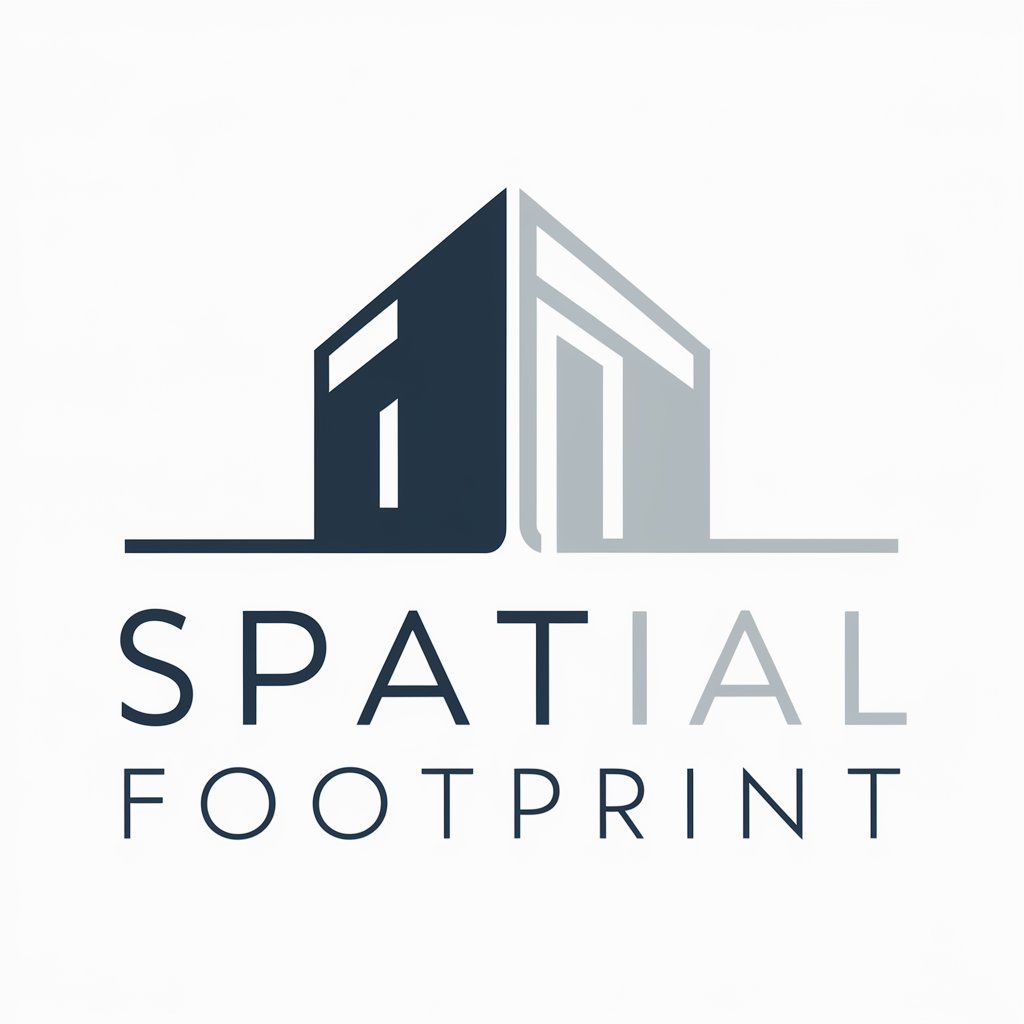
Spatial Footprint - Spatial Data Analysis

Welcome! Let's measure and compare spaces together.
Visualize space with AI precision.
Compare the size of this building to a football field:
Visualize the area of this property in comparison to a city block:
How does the footprint of this house compare to a standard parking lot?
Show the spatial dimensions of this park in terms of tennis courts:
Get Embed Code
Understanding Spatial Footprint
Spatial Footprint is designed to enhance the understanding and analysis of spatial data, focusing primarily on building and property area sizes. Its core purpose is to provide users with tools to measure, compare, and visualize the area sizes of various properties or buildings, transforming raw spatial data into easily interpretable insights. For example, a user can compare the footprint of a local park with that of a shopping mall to grasp their relative sizes visually and statistically. This is particularly useful in urban planning, real estate development, and educational contexts where spatial awareness is key. Powered by ChatGPT-4o。

Core Functions of Spatial Footprint
Area Measurement
Example
Measuring the exact area of a residential property to assess its size for valuation purposes.
Scenario
A real estate agent uses Spatial Footprint to calculate the area of a listing to provide potential buyers with accurate data on the property's size.
Comparative Analysis
Example
Comparing the footprints of different commercial buildings to determine the most suitable for a new office.
Scenario
A business owner compares the footprints of several properties to decide which building offers the best value and space for their growing company.
Visualization
Example
Creating a visual representation of a city block to understand the distribution of green spaces versus built-up areas.
Scenario
Urban planners use Spatial Footprint to visualize and plan the allocation of green spaces within a new development area, ensuring a balance between nature and urban structures.
Who Benefits from Spatial Footprint?
Real Estate Professionals
Agents, developers, and investors use Spatial Footprint to analyze property sizes for valuation, development potential, or investment comparisons, aiding in making informed decisions.
Urban Planners and Architects
These professionals rely on Spatial Footprint for planning and designing urban spaces, ensuring efficient use of land while considering the impact on community and environment.
Educators and Students
In academic settings, teachers and students use Spatial Footprint to understand and analyze spatial relationships, supporting subjects like geography, urban studies, and environmental science.

How to Use Spatial Footprint
Begin Your Journey
Visit yeschat.ai for a free trial, accessible without any login requirement or the need for ChatGPT Plus.
Identify Your Objective
Determine the specific spatial dimensions or area comparisons you wish to explore, such as property sizes, building footprints, or land use analysis.
Input Data
Enter relevant data or select a geographical area of interest through the platform's interactive map interface.
Utilize Features
Apply Spatial Footprint's tools to measure, compare, and visualize spatial data effectively. Use filters and analysis tools for more detailed insights.
Review and Interpret
Examine the generated visualizations and data comparisons. Utilize the insights for decision-making, research, or educational purposes.
Try other advanced and practical GPTs
Molyneux Marketer
Elevating Luxury Brands with AI

Naruto RPG Akatsuki Helper
Empower your ninja journey with AI-driven insights.

リーダーシップトレーニング企画くん”AI.LeadershipTrainingProgram
Empowering Leaders with AI-Driven Insights

Superior Alien Entity
Elevating AI with Superior Intellect

Aligned AI
Aligning AI with Your World

Bättre samtal med ditt barn
Empowering Conversations with Your Child

广告策划师
Crafting Winning Ad Campaigns with AI

MAGIC RETRO CONSOLE
Reviving classic games with AI-powered nostalgia

Tradutor Luso
Precision in Portuguese, powered by AI

HSA Assistant
Navigate health savings with AI precision

NFT Today
Empowering NFT decisions with AI

SEO Intern
Empowering SEO with AI

Frequently Asked Questions About Spatial Footprint
What makes Spatial Footprint unique in analyzing spatial data?
Spatial Footprint utilizes advanced AI algorithms to interpret and visualize spatial data with high accuracy, making complex geographical information easily understandable and accessible to users of all levels.
Can I compare multiple properties' sizes using Spatial Footprint?
Yes, you can compare the sizes of multiple properties or land areas simultaneously, offering insights into spatial dimensions and relationships between different locations.
Is Spatial Footprint suitable for academic research?
Absolutely. Spatial Footprint provides detailed, accurate measurements and visualizations that can support academic research in geography, urban planning, environmental science, and related fields.
How can real estate professionals benefit from Spatial Footprint?
Real estate professionals can use Spatial Footprint to analyze property sizes, understand land use patterns, and evaluate potential development sites, aiding in investment and development decisions.
Does Spatial Footprint offer any customization options for its analyses?
Yes, Spatial Footprint allows users to customize their analyses by selecting specific data layers, applying filters, and choosing from various visualization options to meet their unique needs.